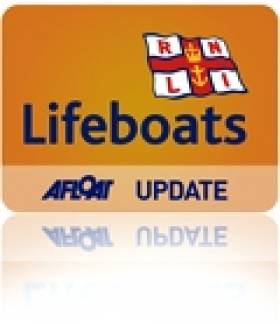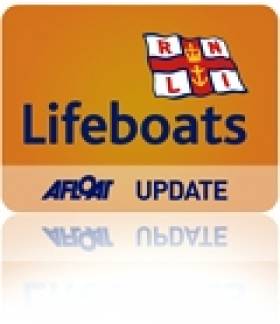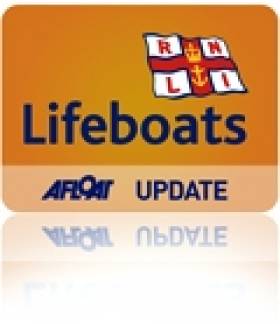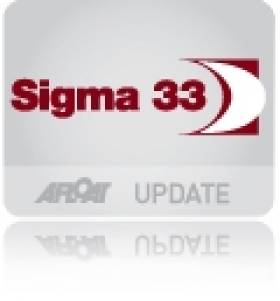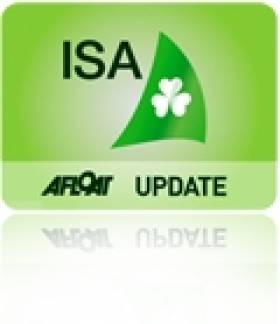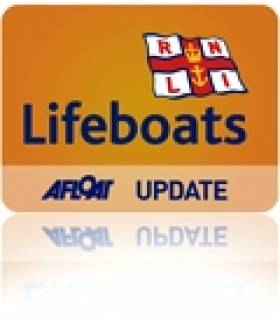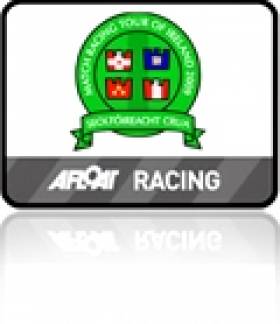Displaying items by tag: Lough
Lough Derg Lifeboat Tows Vessel to Safety
At 07.30hrs, Saturday July 16, Lough Derg RNLI Lifeboat was requested to launch by Valentia Coast Guard, to assist 4 persons whose vessel had suffered engine failure. The skipper of the cruiser had dropped anchor and that was holding them off from the rocks. The lifeboat with helm Peter Clarke, Colin Knight and Ger Egan on board, launched at 07.47hrs. Winds were south-westerly, Force 4, visibility was fair with frequent strong squally showers. The lifeboat was alongside the casualty vessel, a 29ft cruiser, at 08.29hrs. There were four persons on board, all were safe and wearing lifejackets. A lifeboat crew member checked the vessel and established the cause of the failure, he weighed anchor and the lifeboat took the vessel under tow to the safety of Terryglass harbour, where it was tied alongside at 08.41hrs. Lifeboat helm Peter Clarke said that the 'prompt decision to drop anchor was a good one as it prevented any further damage to the vessel'. The lifeboat returned to station and was ready for service again at 09.15hrs
ALSO
At 22.30hrs on Friday night, July 15th Lough Derg RNLI Lifeboat was requested to launch by Valentia Coast Guard, to investigate reports that a vessel, first spotted near the Clare shore, was apparently adrift, but now in Dromineer Bay
The lifeboat with helm Eleanor Hooker, Ger Egan and David Moore on board, launched at 22.40hrs. Winds were south-westerly, Force 4, it was dark. The lifeboat was alongside the casualty vessel, an 18ft speed boat, at 22.43hrs. There were two persons on board, and as they were under the canopy were unaware that they were drifting and were being pushed perilously close the outer wall of the harbour and into shallow water. They did not require any assistance from the lifeboat, but were advised to turn on their navigation lights. They made their way safely to their berthing inside the public harbour at Dromineer. The lifeboat returned to station and was ready for service again at 22.55hrs
On Saturday July 2, Lough Derg RNLI Lifeboat launched, following a request by Valentia Coast Guard, to assist two persons on board a 22ft motor cruiser, that had suffered engine failure and was drifting close to rocks on the Urra shore. The Lifeboat with helm Eleanor Hooker, Ger Egan and Dom Sharkey on board, launched at 19.30hrs. Winds were southwesterly, Force 2. The lifeboat arrived on scene 19.35hrs. The two persons were safe and unharmed and both wearing life-jackets. The vessel was taken under tow, and tied safety alongside at the public harbour at Dromineer at 19.55hrs. The skipper of the vessel thanked the lifeboat crew and said that when he 'saw smoke coming from the engine, he had no option but to cut the power and call for help". He was reassured by the crew that he had done the right thing. The lifeboat returned to station and was ready for service again at 20.20hrs.
At 17.23hrs on Friday July 1, Lough Derg RNLI Lifeboat was requested to launch by Valentia Coast Guard, to assist two persons in difficulty in the water, after their jet ski failed close by the Scilly Islands, at the south-western end of Lough Derg. The Lifeboat with helm Peter Clarke, Eleanor Hooker and Ger Egan on board, launched at 17.35hrs. Soon after launching, the lifeboat was informed that a lakeboat was also going to the assistance of the persons in the water. The lifeboat arrived on scene 17.55hrs. The crew spoke to fishermen in the only lakeboat in the vicinity. The fishermen had no English but conveyed to the crew that they had taken the jet ski and the persons to a landing place on the Tipperary shore. Lifeboat crew searched the Tipperary shoreline indicated by the fishermen, including private harbours, but were unable to locate the jet-skiers or their jet-ski. The Coast Guard were unable to make contact with the person who had called in the request for help. The lifeoboat was stood down at 18.10hrs. The lifeboat returned to station and was ready for service again at 18.40hrsLough Derg Lifeboat Tows Cruiser to Safety
At 19.26hrs, Saturday June 25, Lough Derg RNLI Lifeboat was requested to launch by Valentia Coast Guard, to assist a person whose vessel had grounded on rocks west of the Scilly Islands, in Scarriff Bay on Lough Derg. The lifeboat with helm Eleanor Hooker, Peter Clarke and Colin Knight on board, launched at 19.40hrs. Winds were southerly, Force 3, visibility was good. The lifeboat was alongside the casualty vessel, a 32ft cruiser, at 19.58hrs.
The person on board, senior but with a lifetime of boating experience, was quite unsettled by his experience, having misread his location. He was reassured by the lifeboat crew. After a thorough examination of the vessel, which was not holed, it was taken off the rocks and into safe water. With a crew member on board, the casualty vessel was taken under an alongside tow, via Scarriff Bay, up the Scarriff river in County Clare to his mooring. The vessel was tied safely alongside at 21.20hrs.
The lifeboat returned to station and was ready for service again at 21.40hrs.
White Mischief Wins Sigma 33 Title Again
The Hamilton Shipping sponsored event was scheduled over three days but Friday's 37 knot winds put paid to racing that day. However Principal Race Officer Robin Gray's efforts on the Saturday produced five races then and another three on Sunday, making a substantial championship race programme.
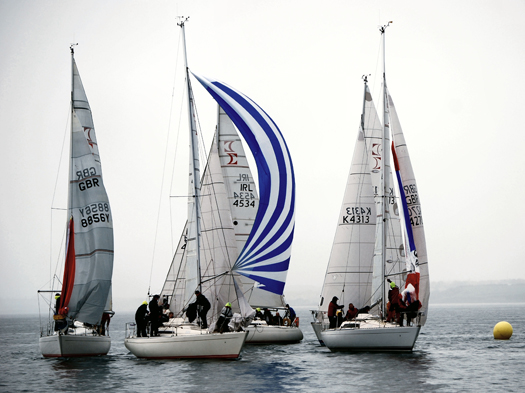
The seventeen strong fleet came from Scotland, Dublin Bay, the Isle of Man, Belfast Lough and Strangford Lough.
Proving that consistency as well as speed pays, Goodbody won only one race but counted scores never over 4th, giving White Mischief a total of 19, seven ahead of runner up, newcomer Stephen Milne and the team on the borrowed Cushendall based Insider. Milne is a member of the Skandia Team GBR Performance Squad as crew for John Gimson in a Star.
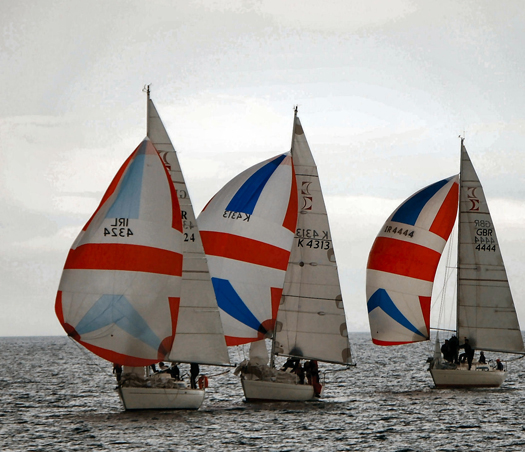
The first and fifth races went to the Scottish boat, Mayrise (James Millar) but a disqualification in Race 7 dropped her from starting third overall on the Sunday to a 6th place finish. Ross Boyd's Mithril from Quoile won Races 2 and 4 and the other Strangford Lough entry, Signet of Kip made up for a disqualification in Race 2 by winning Races 3 and 8. Goodbody took first in Race 7.
At the prize giving Hamilton Shipping's Finance Director Ken Craig admitted that he knew nothing about sailing but was impressed by this competition.

He couldn't be 69!

Hamilton Shipping Finance Director Ken Craig and his wife Tricia with RUYC Rear Commodore Stephen Graham and the crew of White Mischief. Photos by Ken Hunter
Sailing Body Elects First Female President
In one of her last official functions as Minister for Sport, outgoing local TD Mary Hanafin attended the Irish Sailing Association's annual Ball last Saturday in the Royal Marine Hotel in Dun Laoghaire.
Attended by 315 people the black tie ball featured an awards ceremony that has been hailed 'a great success' by the association.
On Saturday afternoon the association elected a new President, Niamh McCutcheon, the first female ISA President since the organisation was founded in 1945.
A collection in aid of the RNLI raised over €2,250.
Award details below:
ISA Sailing Achievement of the Year
This award is presented by the ISA to recognise the outstanding achievement in a sailing craft by an Irish person or in Ireland during 2010.
Winner: Nicholas 'Nin' O'Leary, Royal Cork Yacht Club
Nicholas' achievements included narrowly beating his father Anthony at the ISA All Ireland Championships in 2010 by just a single point after a nail-biting finale in difficult conditions off Kinsale in November. The win made it three-in-a-row for this remarkable young 24 year old sailor - the only person to achieve this in the 64 years of the event's history.
ISA Volunteer of the Year
This award is given to a member of an ISA affiliated club or class who has made a significant voluntary contribution to their sport during 2010.
Winner: Brian Craig, Royal St. George Yacht Club.
Brian has been nominated by the Royal St. George Yacht Club for the vital role he has played in developing sailing in Ireland and specifically Dun Laoghaire over the past 40 years. His most recent success was winning the bid for Dun Laoghaire to host the 2012 ISAF Youth Worlds.
ISA Youth Sailor of the Year
This award is presented by the ISA to recognise the outstanding achievement by a sailor competing in ISA Performance Pathway boats during 2010.
Winner: Finn Lynch, Blessington Sailing Club
Placing 2nd overall at the Topper World Championships in 2010 left the Carlow sailor in good stead for a Youth Sailor nomination. A determined sailor and strong character, it's clear that with these strengths Finn has the potential to go far in our sport.
ISA Instructor of the Year
This award recognises the role instructors have in providing access to our sports. The final 5 have been nominated by their students with the ultimate winner selected by an ISA judging panel.
Winner: Aine Carroll, Rush Sailing Club
Aine has been an ISA instructor for the last 11 years, instructing both adult and junior sailors in Rush Sailing Club. A keen Mermaid sailor, her love of sailing, her enthusiasm for the sport and willingness to give her time to her sailors have been infectious and remarkable. Apparently the kids at the club think she is a 'legend' and 'cool'!
ISA Training Centre of the Year
The face of ISA water sports to thousands of participants. The best in 2010 as nominated by their students.
Winner: University of Limerick Activity Centre
Situated on the sheltered shores of Lough Derg, University of Limerick Activity Centre has been in operation for over a decade. ULAC provides a varied programme of adventure activities to the general public. The University of Limerick Activity Centre runs ISA courses in sailing dinghies, windsurfers, powerboat as well as emergency care training courses.
Bangor Lifeboat Reunite Missing Child with Parents
Belfast Coastguard received the initial call for help and requested RNLI Bangor Lifeboat to launch immediately and start searching the shoreline between Lukes Point and Ballyholme Bay.
Within minutes of the rescue pagers being activated volunteer crew at RNLI Bangor Lifeboat had assembled and launched the lifeboat.
Knowing that this type of rescue was time critical, volunteer crew not on board the lifeboat proceeded on foot and by bike to the Ballyholme Bay area.
Thankfully one of the RNLI volunteers on shore spotted the young boy ½ mile from the initial search area and was able to reunite him with his parents.
Peter Semple the volunteer crew member who found the young boy said. 'We are extremely happy and relieved that the young boy has been found'. He added 'We were delighted to reunite him with his parents'.
Related Safety posts
RNLI Lifeboats in Ireland
Safety News
Rescue News from RNLI Lifeboats in Ireland
Coast Guard News from Ireland
Water Safety News from Ireland
Marine Casualty Investigation Board News
Marine Warnings
Rejig Means No South Coast Match Racing Fixtures
There will be no match racing on the south coast this year following a rejig of the fixtures calendar.
After two years of expansion for match racing in terms of events the theme for 2011 is consolidation.
Changes to the ISA SailFleet schedule for the boats mean that we have had to go through a rejigging of the match racing calendar.
The major impact is that Royal Cork YC are to take the boats latter than originally hoped meaning that they will be unable to host a leg of the Tour.
With Kinsale not taking part in the SailFleet scheme this year that means no match racing on the south coast for the first time in a couple of years.
With no tie up with the Dun Laoghaire Festival of Cultures available this year a date of July 23rd and 24th has been settled on for the Ireland vs The World International.
The highlight of last year this event will once again pit Irelands 6 best match racers against 6 teams from the rest of the world. Once again National and Tour champion John Sheehy will captain the Irish team.
The Leinster Match Racing Open, to be hosted by the Royal Irish Yacht Club, has been moved to July 16th and 17th to allow it to act as qualification for the Irish team for the following weekend and to give Laura Dillion and the Gladiators (Sam Hunt, Paddy Blackley, Peter Bayly, Richard Murphy) competitive practice immediately before heading over to Poland to represent the country at the ISAF Nations Cup.
Howth Yacht Club's, Dublin Match Racing Open stays with a date of September 3rd and 4th before we head for Lough Derg and the Womens (October 15th and 16th) and Open National Championships (November 5th And 6th).
All of the above means that here will be no Munster Match Racing Open this year and work continues to find a host for the IUSA Student Match Racing Nationals with Galway a potential for early April. There has been considerable work on the cost of entry for events over the winter and the majority of events will have a basic entry of €330 this year. All events will be run at ISAF grade 3.
Revised calendar
July 16-17th – Leinster Match Racing Open, Royal Irish Yacht Club
July 23-24th – Ireland vs The World International, Royal St George Yacht Club
September 3rd and 4th – Dublin Match Racing Open, Howth Yacht Club
October 15th and 16th - Womens Match Racing Championships, Lough Derg Yacht Club
November 5th and 6th – National Match Racing Championships, Lough Derg Yacht Club
Moville Boat Club

Picture from Moville and Greencastle Punt Regattas 2009
Moville Boat Club
Based in Moville, Inishowen, Co Donegal, Moville Boat Club members count themselves as some of the luckiest sailors in the World. We sail on one of the most beautiful loughs in Ireland. Each Sunday we gather to race in a friendly and relaxed atmosphere. Not to say we are not competitive, but mostly in a friendly way. The ethos of the club is to encourage sailing and boating on Lough Foyle at a price which anyone can afford. There is plenty of room for new members. Visiting boats are most welcome and there are a number of visitor moorings available.
(Details and image courtesy of Moveille Boat Club)
Moville Boat Club c/o Seamus Bovaird, Johns Brae, Shore Green, Greencastle, Co Donegal. Email: [email protected] or [email protected]
Have we got your club details? Click here to get involved


























